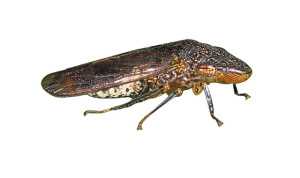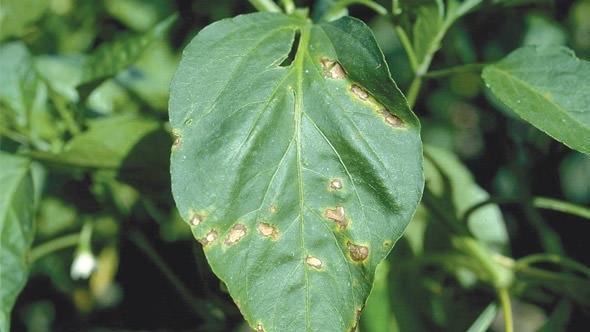Glassy-Winged Sharpshooter Found In Marin County

Glassy-winged sharpshooter
A glassy-winged sharpshooter (GWSS) was found recently in Marin County during a routine inspection of a nursery shipment from Ventura County. The pest — known for spreading Pierce’s Disease — can be devastating to winegrapes.
The GWSS obtains nutrients by feeding on plant fluids in the water-conducting tissues. An adult glassy-winged sharpshooter can drain 200 to 300 times its bodyweight in water every day, the equivalent of a 150-pound adult drinking about 4,300 gallons of water in a day, according to a Marin County news release.
The biggest problem with GWSS, though, is that it spreads the bacterium Xylella fastidiosa, which causes Pierce’s Disease (PD) in grapes.
“This is an extremely serious insect pest we need to continue to keep out of Marin County and the Bay Area,” says Marin County Agricultural Commissioner Stacy Carlsen.
According to University of California IPM, PD symptoms often first appear as water stress in midsummer. In mid- to late-summer, leaves become slightly yellow along the margins in white varieties, or red along the margins in red varieties. Fruit clusters then shrivel, and dried leaves fall. Wood on new canes will mature irregularly. The following spring, delayed and stunted shoot growth will occur, even if no symptoms appeared the previous year.
Monitoring For GWSS
UC IPM guidelines say the best time to start monitoring for glassy-winged sharpshooters is at budbreak. Growers should follow this protocol:
- In late February just before budbreak, place several double-sided yellow sticky traps (at least 9-by-11 inches) in areas adjacent to vineyards that serve as habitat for sharpshooters, such as riparian areas and ornamental landscapes.
- In the vineyard, place a minimum of six traps per block. Place one trap per 10 acres within 30 feet of the vineyard perimeter, especially on edges adjacent to alternate hosts such as citrus.
- Check traps once per week beginning at budbreak and more frequently after two to three days of warm weather. Monitor traps for glassy-winged sharpshooters throughout the season until daytime temperature remains below 65° F.
- Remove insects from the trap after counting and recording on a monitoring form.
- Replace traps every two weeks or when they become excessively dirty or discolored and especially on edges adjoining alternate glassy-winged sharpshooter hosts such as citrus. Treatment is warranted for glassy-winged sharpshooters if they are present in the vineyard.
Take Action If You Spot GWSS
Anyone who thinks they have found a glassy-winged sharpshooter is asked to call the Marin County branch of the Department of Agriculture at 415-473-6700 as soon as possible or contact the Marin County Farm Advisor UC Cooperative Extension at 415-473-4204. Specimens can be brought to the Department of Agriculture or the Farm Advisor UC Cooperative Extension at 1682 Novato Boulevard, Novato, during regular office hours.
The PD/GWSS Referendum
The California Association of Winegrape Growers (CAWG) has launched a website to help inform growers about the PD/GWSS referendum. Up-to-date information on a variety of aspects concerning the PD referendum can be found on the site, including voting procedures, facts about PD and GWSS, statistics on expenditures, the latest news and links to other sites with information on the PD/GWSS threat.
“Through the industry supported Pierce’s Disease Control Program, we helped stop the spread of PD and soon commercial nurseries will have access to a variety of PD-resistant winegrapes — none of which would be possible without the PD assessment,” says CAWG President John Aguirre. “The program is operating at the lowest assessment rate since its inception, yet it continues to deliver tremendous value.”
Ballots for the vote on the PD referendum will be sent out the week of March 30. At least 40 percent of eligible growers must cast ballots to validate the referendum. Passage requires either: a “yes” vote by 65 percent of those voting who represent the majority of the assessment that was paid in 2014, or a “yes” vote by a majority of those voting who represent 65 percent or more of the assessment that was paid in 2014.
Sources: UC IPM, CAWG, County of Marin










